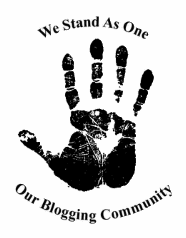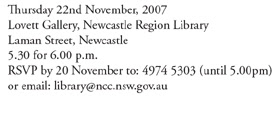 Blogging and Community
Blogging and Community
Monday 29 October 2007
Labels:
MeME
2
responses

I was invited by Bobby @ Revellian Dot Com to write a post as part of Blogging For Friendship Writing Project....
so what is blogging and community ?
# 1. What is a blog?
A blog (a portmanteau of web log) is a website where entries are written in chronological order and commonly displayed in reverse chronological order. "Blog" can also be used as a verb, meaning to maintain or add content to a blog.
Many blogs provide commentary or news on a particular subject; others function as more personal online diaries. A typical blog combines text, images, and links to other blogs, web pages, and other media related to its topic. The ability for readers to leave comments in an interactive format is an important part of many blogs. Most blogs are primarily textual, although some focus on art (artlog), photographs (photoblog), sketchblog, videos (vlog), music (MP3 blog), audio (podcasting) and are part of a wider network of social media. Micro-blogging is another type of blogging which consists of blogs with very short posts.
As of September 2007, blog search engine Technorati was tracking more than 106 million blogs.
# 2. Blogger's Code of Conduct
The Blogger's Code of Conduct is a proposal by Tim O'Reilly for bloggers to enforce civility on their bloggers by being civil themselves and moderating comments on their blog. The code was proposed due to threats made to blogger Kathy Sierra. The idea of the code was first reported by BBC News, who quoted O'Reilly saying, "I do think we need some code of conduct around what is acceptable behaviour, I would hope that it doesn't come through any kind of regulation it would come through self-regulation."
O'Reilly and others came up with a list of seven proposed ideas:
Take responsibility not just for your own words, but for the comments you allow on your blog.
Label your tolerance level for abusive comments.
Consider eliminating anonymous comments.
Ignore the trolls.
Take the conversation offline, and talk directly, or find an intermediary who can do so.
If you know someone who is behaving badly, tell them so.
Don't say anything online that you wouldn't say in person.
In later comments, O'Reilly gave a tacit endorsement of Jon Garfunkel's Comment Management Proposal: "Jon, your post at Comment Management Responsibility: A Proposal is very detailed and thought provoking, as well as way more comprehensive than anything I'd thought so far."
# 3. Collaborative blog
A collaborative blog is a type of weblog which publishes posts written by multiple users. The majority of high profile collaborative blogs are based around a single uniting theme, such as politics or technology.
While the traditional popular (and rather insulting) view of the weblog is that of the lone blogger hunched over his or her keyboard in their parents' basement, in recent years the blogosphere has seen the emergence and growing popularity of more collaborative efforts, often set up by already established bloggers wishing to pool time and resources to both reduce the pressure of maintaining a popular website and to attract a larger readership
Popularity
In recent years the popularity of collaborative blogs has soared. In fact, at time of writing seven of the top ten weblogs listed in N.Z. Bear's Blog Ecosystem (a popular league table of blogs based on the number of incoming links) employ collaboration of some sort.
In addition to the growth in traditional collaborative blogs the last two years has seen the emergence of a professional variety of collaboration - made up of either professional, paid commentators such as The Huffington Post (though arguably The Post does not qualify as a true blog) or high profile bloggers engaged in a profit-sharing scheme (i.e. Pajamas Media).
Do you know the meaning of the following terms?
Gulog Blooger Blogstream Clix Instalanche
check out the terms and their meanings here
source: Wikipedia, the free encyclopedia
Blogs and Community – launching a new paradigm for online community?
Nancy White is a well known and highly respected e-facilitation and e-community specialist. Based in Seattle, USA, Nancy works internationally through Full Circle and Associates on a broad range of community development and facilitation projects. She is an avid blogger and generous information sharer and is deeply interested in successful online interaction in online communities, Communities of Practice (CoP), distributed teams and virtual work groups.
Community is alive and well in the blogosphere. It is emerging in a variety of patterns and manifesting in all sizes and types of communities. By beginning to explore their shape and interaction patterns, we can begin to think about how to intentionally nurture blog based communities for specific purposes. Much like the lessons for forum based communities which emerged in the late 1990s, we are now discovering what works, why, and what might happen next. It is still new. The patterns are not stable. But they suggest ways to think about the role of technology, power, identity and content in designing online communities.
Like the artist community in Fremont with their Troll, when a community sees a gap or an opportunity, they join together to fill it. So this exploration of the form and function of blog based communities is just beginning. We see a new tool, and we begin the creative process. The canvas is up, the paints are in front of us. The next step echoes Howard Rheingold’s famous email tag line ‘…what it is —> is up to us’ (H. Rheingold, 1997, pers. comm., 28 April). As the godfather of online communities, (he coined the term ‘virtual community’), Rheingold puts his finger on the pulse of possibility, yet again. [more]
Join the iReply movement! Linky Love Boyd
Linky Love Boyd





















